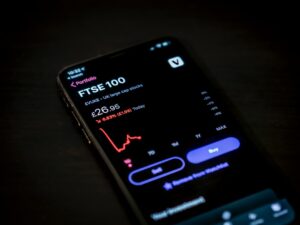Mastering the Art of Technical Analysis in Swing Trading Forex
Technical analysis is a vital tool for traders in the forex market. It involves studying historical price data, patterns, and indicators to predict future price movements. When applied to swing trading, technical analysis can help traders identify potential entry and exit points to maximize profits.
Swing trading is a popular trading strategy that aims to capture short to medium-term price movements. Unlike day trading, which involves opening and closing positions within a single trading day, swing traders hold positions for several days or weeks. This strategy allows traders to take advantage of price trends and avoid the noise of short-term fluctuations.
To master the art of technical analysis in swing trading forex, traders need to understand key concepts, indicators, and patterns. Here, we will discuss some of the essential elements of technical analysis and how they can be applied in swing trading.
Trend Analysis
One of the core principles of technical analysis is identifying trends. Trends reflect the overall direction of a currency pair’s price movement. Traders can use various tools, such as trend lines, moving averages, and trend indicators, to identify and confirm trends.
In swing trading, it is crucial to identify the primary trend and trade in the same direction. Traders can use higher time frame charts, such as daily or weekly charts, to determine the dominant trend. Once the trend is established, traders can look for potential swing trading opportunities within that trend.
Support and Resistance Levels
Support and resistance levels are key areas on a price chart where the price tends to stall or reverse. Support levels are areas where buying pressure is expected to be strong enough to prevent further price declines, while resistance levels are areas where selling pressure is expected to be strong enough to prevent further price increases.
Swing traders can use support and resistance levels to identify potential entry and exit points. When the price approaches a support level, traders may consider buying as the price is likely to bounce off that level. Conversely, when the price approaches a resistance level, traders may consider selling as the price is likely to reverse from that level.
Candlestick Patterns
Candlestick patterns are graphical representations of price movements within a specific time frame. They provide valuable information about market sentiment and potential price reversals. Some commonly used candlestick patterns include doji, engulfing, hammer, and shooting star.
Swing traders can use candlestick patterns to confirm potential entry and exit points. For example, a bullish engulfing pattern, which occurs when a small bearish candle is followed by a larger bullish candle, suggests a potential reversal from a downtrend to an uptrend. Traders may consider buying when this pattern forms at a support level.
Indicators
Technical indicators are mathematical calculations based on historical price data. They help traders analyze market conditions and generate trading signals. Some popular indicators for swing trading forex include moving averages, relative strength index (RSI), and stochastic oscillator.
Moving averages are commonly used to identify the direction and strength of a trend. Traders may use a combination of different moving averages to confirm trend reversals. RSI and stochastic oscillator are momentum indicators that help traders identify overbought and oversold conditions, indicating potential trend reversals.
Risk Management
Mastering technical analysis in swing trading forex also involves implementing effective risk management strategies. Risk management is crucial to protect capital and minimize losses. Traders should determine their risk tolerance and set appropriate stop-loss levels for each trade.
Additionally, traders should also consider position sizing based on their risk tolerance and the size of their trading account. By managing risk effectively, traders can preserve capital and stay in the game for the long term.
In conclusion, mastering the art of technical analysis in swing trading forex requires a solid understanding of key concepts, indicators, and patterns. By identifying trends, support and resistance levels, candlestick patterns, and using indicators effectively, traders can improve their chances of making profitable trades. Furthermore, implementing sound risk management strategies is essential for long-term success in swing trading. With practice and experience, traders can enhance their technical analysis skills and become more successful in swing trading forex.





